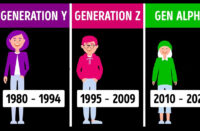Here’s where different messages, themes, tones, etc. need to be nuanced to get the balance right. You’re looking to use digital marketing, for example, to persuade a buyer to try something from you which they’ve never tried before.
Equate this to driving past a shop window looking at a gadget you’ve never had, don’t quite know what it does, and you’re wondering if it would suit you. How many times do you drive past that window? If the advert was so overpowering, you might change your route completely just to avoid that window.
So, you want to build up trust – that’s number one.
Secondly, you want that person driving by to learn one new thing about your wonder product each time they go past. You answer a question and they think of another. When they’ve gone past a few times, they may want a closer look. They can’t stop their car, they’re too busy – what can they do? Well, the sign in the window tells them where there’s more info and it’s really easy. The driver takes a peak closer and finds your product is now comparable with the one they’ve always had. Now they’re curious. They ask themselves: ‘What is the catch?’ It could be quality, delivery, availability, maintenance, aftercare, compatibility, longevity, ease of use and so on. Suddenly, they want to pull everything apart and find the problems. They’re now looking for reasons not to buy.
Our job is to deliver that journey. We answer those questions, we keep the positives they like in the foreground, but we raise the hood on the engine and take it to pieces with them. We’re not in a hurry. We want them not just to buy. We want them to believe. If they believe, they enthuse, they refer, they recommend. These customers run to the next event and some of them drag friends along. That’s why the good sell means the best possible outcomes for the customer and repeat and growing business for you.








